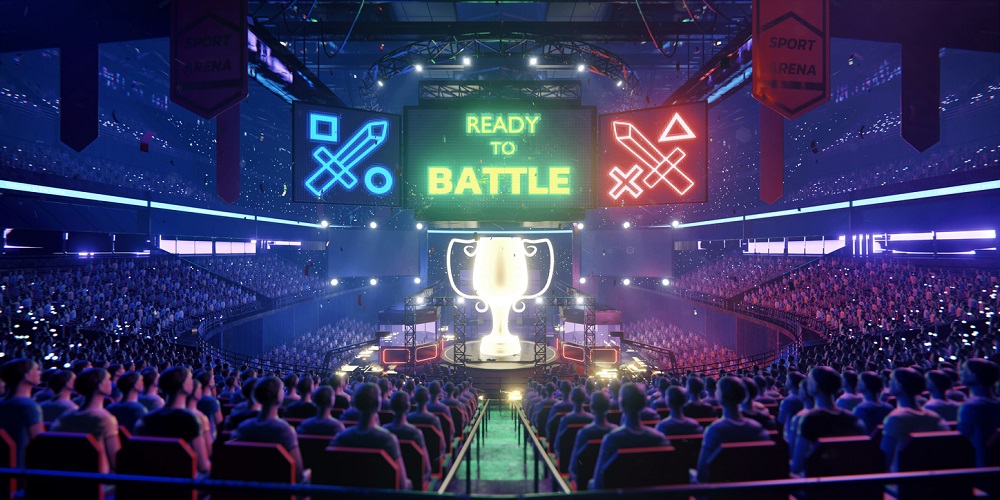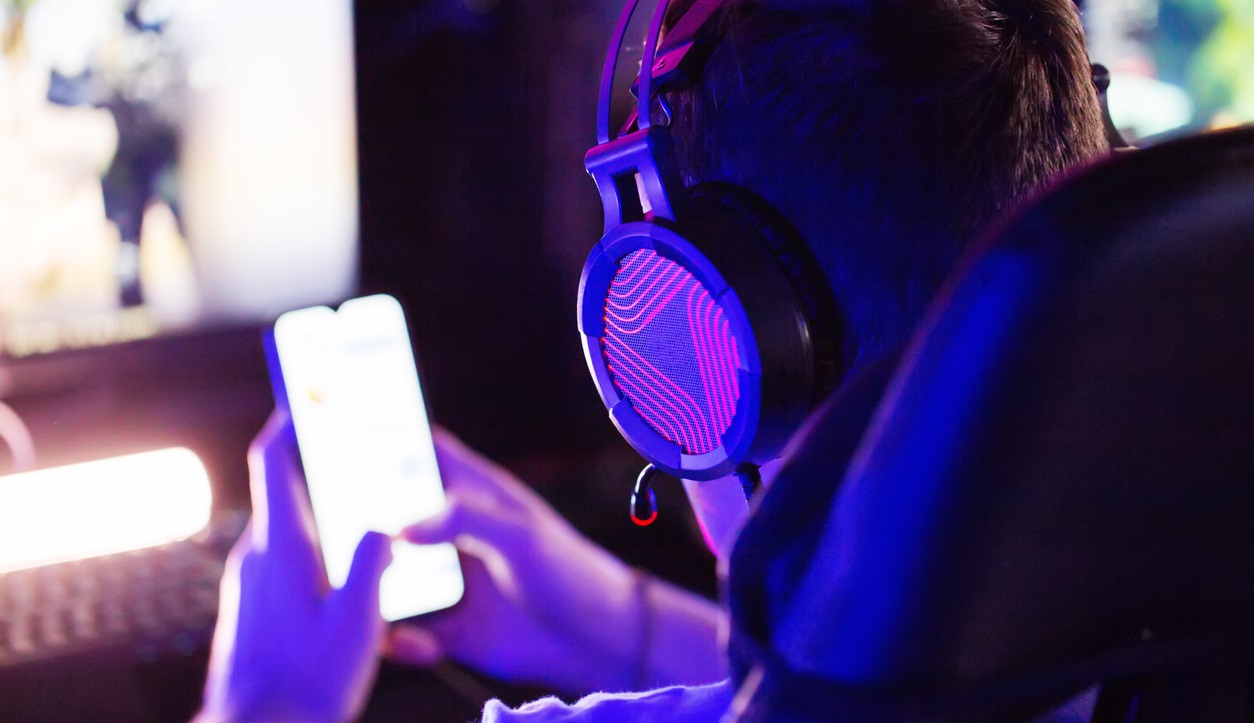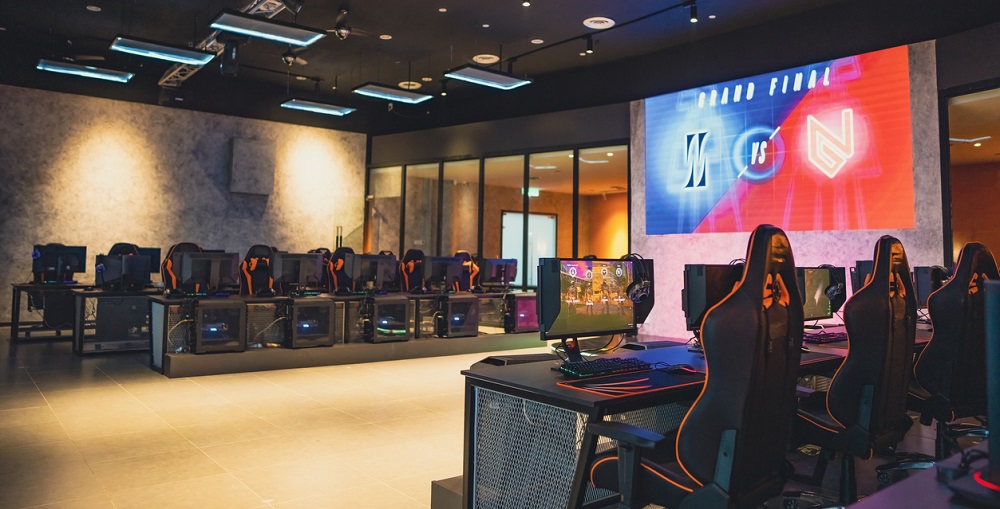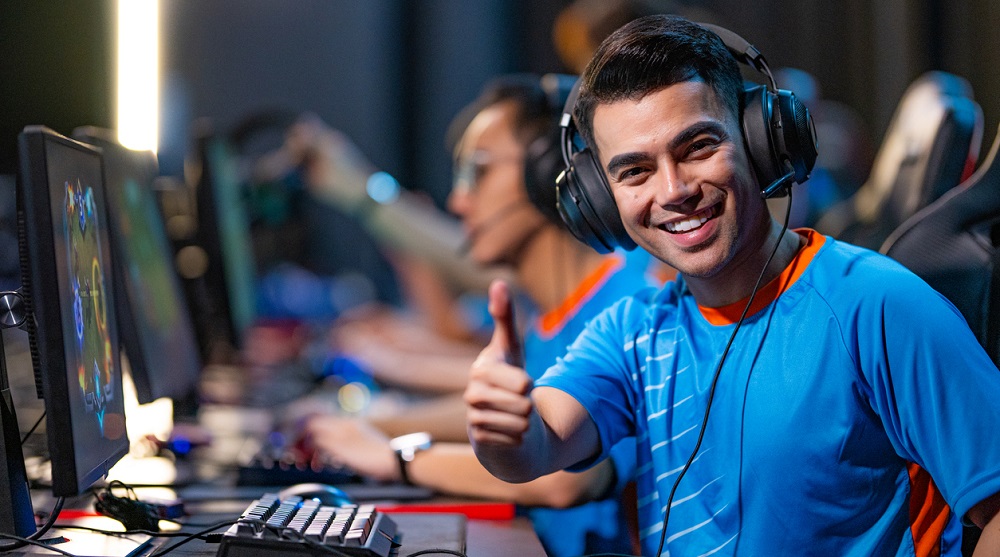Cybersports video monitoring: how video surveillance helps in esports

From ~$325 million USD global revenue in 2015, esports has evolved to an industry expected to generate $4.9 billion USD in revenue in 2025.
With over 680 million viewers worldwide and prize pools of $70+ USD million across disciplines like LOL, Apex Legends, Overwatch, and PUBG, the contemporary cybersports scene demands top-tier organization, logistics, and above all – security.
Over the years, video surveillance has become a critical component at esports events, helping maintain the tournaments integrity, facilitate the safety of players, staff, and spectators, and protect valuable equipment. Let’s explore how cybersports video monitoring addresses the unique challenges of the esports world.
How video surveillance helps in esports
Cybersports video monitoring: Cheating prevention
The flagship event of the Dota 2 gaming scene – The International – boasted an impressive $40 million USD prize pool in 2021 – a record in esports history up to date. 2025’s Fortnite Championship Series is projected to have a total prize pool of $8 million USD, and the multi-game 2025 Esports World Cup’s is to reach $70+ million USD collectively. With such budgets at stake, it’s important to ensure the fair play spirit of the competition, countering any cheating incidents. Video surveillance helps prevent cheating by monitoring for hardware tampering or unauthorized software, banning external communication or restricting coaching access beyond official team communication channels, and more.

Cybersports video monitoring: Player and team safety
LAN esports events bring together players, staff, and large crowds of spectators, often filling entire stadiums. Ensuring the physical safety of everyone involved requires effective crowd control and proactive security measures like
* the Slip and Fall detection able to see if a person has fallen down,
* the Detector of Abandoned Objects to spot unattended bags,
* the Object Recognition that can be trained to detect weapons and other dangerous items even in a crowded place.
This all showcases how video surveillance plays a vital role in managing potential risks and maintaining a secure environment for all participants.
Cybersports video monitoring: Venue and equipment protection
The need for robust security in esports extends beyond player safety and fair play; it’s also crucial for protecting valuable assets and expensive gear. Following a high-profile incident involving the theft of a team coach’s Mercedes keys backstage at a Dota 2 event, video surveillance has become an essential safeguard for all equipment at esports events. Alongside their investigation potential, video cameras are proven to have a significant anti-theft effect, and that holds true at esports competitions: bootcamps and practice rooms, backstage areas, and even stage booths.

Cybersports video monitoring: Regulatory compliance
Video surveillance plays a crucial role in meeting legal and regulatory requirements. Countries like China and South Korea have strict guidelines regarding surveillance in public spaces and at events with large gatherings. Video surveillance systems can be implemented to ensure compliance with these regulations. Furthermore, surveillance recordings and live streams can be invaluable tools for investigating accidents, demonstrating due diligence in insurance claims or legal proceedings, and confirming adherence to safety protocols. Let’s not forget how during the Coronavirus outbreak and in the post-pandemic era, video surveillance played a vital role in upholding health and safety regulations.
Gathering large groups of people under one roof also imposes responsibilities in the fight against fire hazards, too. Advanced video surveillance systems can detect early signs of smoke and use various notifications for instant reactions.
Cybersports video monitoring: Access control
Modern video surveillance systems offer far more than just security monitoring. Automation is increasingly integrated, providing added value in esports environments. Facial recognition technology, now common in many video surveillance solutions, provides a powerful tool for contactless access control. This allows for secure and efficient entry for staff into restricted areas, teams to training camps (bootcamps), and attendees to stadium venues.
Video surveillance systems are easily integrated with perimeter security infrastructure and can be used, for example, in combination with digital locks.
Cybersports video monitoring: Beyond security
Like in many other businesses, video surveillance in multi-million esports competitions can double as a tool for other tasks beyond security to:
and many more!
Types of surveillance used at cybersports events
To capture the excitement and ensure the integrity of esports events, a variety of camera systems are deployed. Here’s a breakdown of the different types and their roles:
1. Player cams: connecting with the audience
Many esports tournaments now feature broadcast-integrated player cameras: webcams that broadcast the reactions and emotions of players whose screens are being shared during live streams. Seeing a player’s reactions and emotions creates a deeper connection with the audience. Initially intended for entertainment, these cameras are increasingly valuable for potential eye-tracking analysis in case of cheating suspicions. Moreover, Riot Games introduced comprehensive multi-angle camera systems for their League of Legends championships, monitoring player hand movements, peripherals, screens, and the communication (“comms”) area. This allows for a VAR-style review system (similar to what’s used in soccer), where officials can analyze incidents in detail.
2. Standard security cameras: ensuring safety and security
Apart from anti-cheating measures, cybersports video monitoring plays a vital role in standard security protocols. This includes monitoring stadiums, surrounding areas, food courts, and other public spaces. Depending on the location, various types of CCTV cameras are employed, from overhead dome cameras providing wide-angle no-blind-spot views to robust weather-resistant bullet cameras designed for outdoor environments. These systems serve as crucial digital forensics tools and provide live views for security personnel.
3. Utility cameras: capturing the atmosphere
Esports is a visually engaging form of entertainment, and cameras are essential for capturing the excitement. Beyond security and integrity matters, these cameras record important moments, player interactions in practice rooms or outside the arena, and audience reactions in fan zones. PTZ cameras with automated guard tours help cover large areas, while for open-air venues, security drones are increasingly used to provide aerial views and expanded coverage.

4. AI cameras: automation and efficiency
Modern cybersports video monitoring goes far beyond simply recording footage. AI-powered cameras are transforming the way organizers proceed with routine operations, enabling tasks like biometric access control, automated ticket scanning, fire hazard detection, health protocol compliance (e.g., mask wearing), and more. Thermal cameras offer night vision capabilities, enhancing security in low-light conditions.
“Security cameras are part of the infrastructure—like LAN cables or power strips. You don’t see them, but without them, the whole thing risks falling apart.”
John Fazio,
CEO of Nerd Street Gamers in his 2020 TechCrunch Interview
In conclusion:
Esports is set to become a truly global spectacle, rivaling the viewership of established sports like hockey, soccer, or basketball. If you still question its legitimacy, consider that over 100 countries now have formal esports federations or government-backed initiatives. The recognition of esports as a medal event in regional tournaments, such as the Asian Games, only confirms its place on the world stage.
Beyond counter-striking the standard security concerns characteristic of any public gathering, video surveillance in esports offers additional benefits in ensuring integrity and fair play in competitive gaming. Following scandals like the 2018 CS:GO spectator mode bug exploits and the 2023 Valorant aim-hacking allegations, tournament host teams have increasingly embraced video surveillance, and the trend appears set to remain.
It’s game over for doubt – video surveillance in esports is here to stay.

P.S. An Esports event demands a robust and reliable video surveillance system. Xeoma video surveillance software is the perfect choice for high-quality cybersports video monitoring, as it is built on 20 years of experience in software development and video surveillance. The result? Smart and adaptable solution that understands the unique needs of the esports industry and delivers unprecedented performance and flexibility.
With Xeoma, you are getting:
– over 100 features, over 30 video analytics tools;
– support for all types of cameras, 99% of cameras in the world;
– support for the most popular operating systems and free mobile apps;
– free customer care;
– rapid development, with user requests accepted;
– flexibility in configuration;
– various embedded streamlining practices;
and many more!
Try Xeoma for free! Enter your name and your email to send the license to in the fields below, and click the ‘Get Xeoma free demo licenses to email’ button.
We urge you to refrain from using emails that contain personal data, and from sending us personal data in any other way. If you still do, by submitting this form, you confirm your consent to processing of your personal data
July 30, 2025
Read also:
How CCTV keeps the Tour de France, La Vuelta and Arctic Race of Norway safe&secure
Stay safe during ATP cup 2021
Tech support note: We need auto tracking for sport games (football, basketball). Can Xeoma do that?
FIFA World Cup: stadium security is important, but safety is primary
Video monitoring in tennis: How CCTV accompanies major tennis championships
Video surveillance system at sports building
Video surveillance in golf championships: enhancing the experience and ensuring security
Top global football leagues: the role of video surveillance
Racing: video surveillance on Formula 1 World Championship